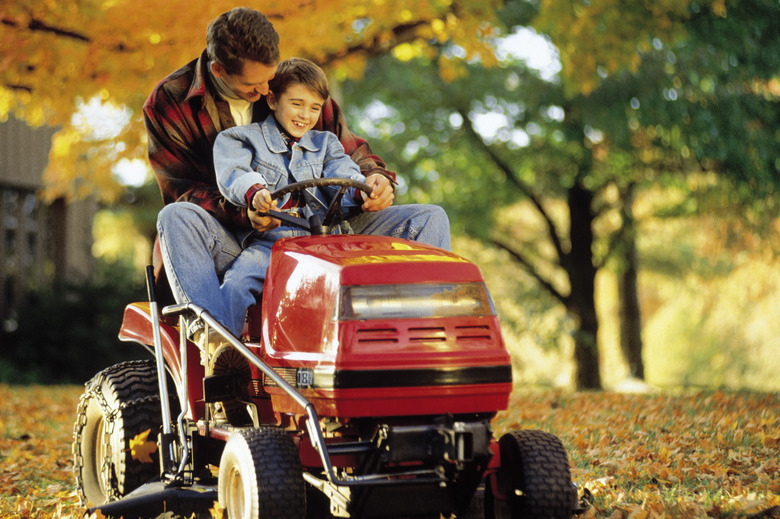Vibration Problems With A Mower Deck
Mower decks might develop unusual vibrations because of improper adjustments to blades and other parts. Deck vibrations also warn of worn or broken parts that cause sudden mechanical failures. If you notice odd vibrations in the mower deck, disconnect the power takeoff and stop mowing. Simple checks can diagnose most problems, and repairs might take only a few minutes. Mowing until the deck collapses may send metal parts flying, endangering other people and nearby property.
Adjustments
After stopping the mower, look behind the machine to see how well the deck cuts. Loose deck drive belts or loose blade mounting bolts can cause blades to vibrate and stall instead of spinning and shearing grass. If part of the mower's swath stands taller, check the mounting bolts on the problem blade. Either the blade or the deck spindle bearing holding the blade might be loose. Worn belts can also cause slipping blades. Replace any cracked or frayed belts and check idler arms and springs. Broken idler springs cause loose, vibrating belts. Check deck belts every time you mow, recommends Grasshopper Mower, Inc.
- Mower decks might develop unusual vibrations because of improper adjustments to blades and other parts.
- Loose deck drive belts or loose blade mounting bolts can cause blades to vibrate and stall instead of spinning and shearing grass.
Suspension
Pins that hold the mower deck to a tractor mower's chassis or a front-deck mower's hydraulic arms can wear out. Deck pins secured by cotter keys work better than deck pins with spring-loaded ball detentes. Normal wear and tear can expand the holes into which the deck pins fit, increasing vibration and allowing loose pins to fall out. On front-deck mowers, deck lift arms join the top of the deck farther forward, allowing cutting height adjustment or a high lift for jumping curbs. Welds or bolts connecting the lift arm to the deck can crack or work loose.
Deck Bearings
The spindle bearings holding the blades in place beneath the deck eventually develop enough play to cause blade vibration. Any spindle bearing worn loose enough to vibrate needs immediate replacement or repair, since a failed bearing might drop the spindle and the blade out of the deck. With the mower off and parked and the deck supported safely, grasp each blade and rock it to test for play. In some mowers, worn bearings and seals can be replaced in the original spindle housing. A damaged crankshaft on single-blade mowers causes similar vibration problems and marks the end of the machine.
- Pins that hold the mower deck to a tractor mower's chassis or a front-deck mower's hydraulic arms can wear out.
- In some mowers, worn bearings and seals can be replaced in the original spindle housing.
Maintenance
Following lubrication schedules carefully extends the life of blade bearings and deck wheel bearings. Most manufacturers recommended greasing the pivot points and bearings in the deck every 25 hours of operation. Cleaning the deck regularly to prevent drag from grass buildup puts less strain on deck parts. Sharp blades also take stress off the deck, but sharpening without balancing can add problems. Count the passes on the grinder when sharpening blades and make the same number of passes on each side. Always check the blades on a balancing cone, and adjust for perfect balance with a few passes on the end of the blade.
